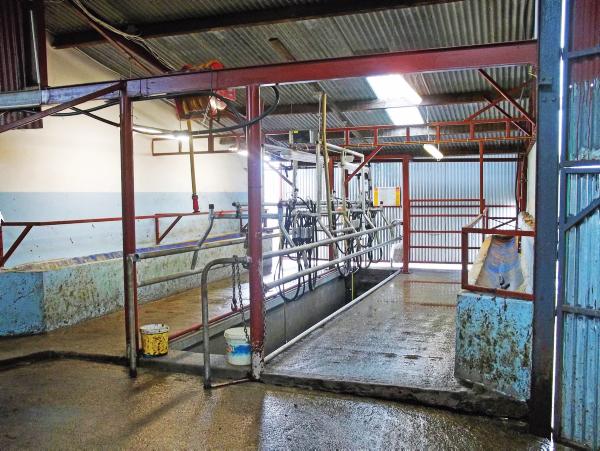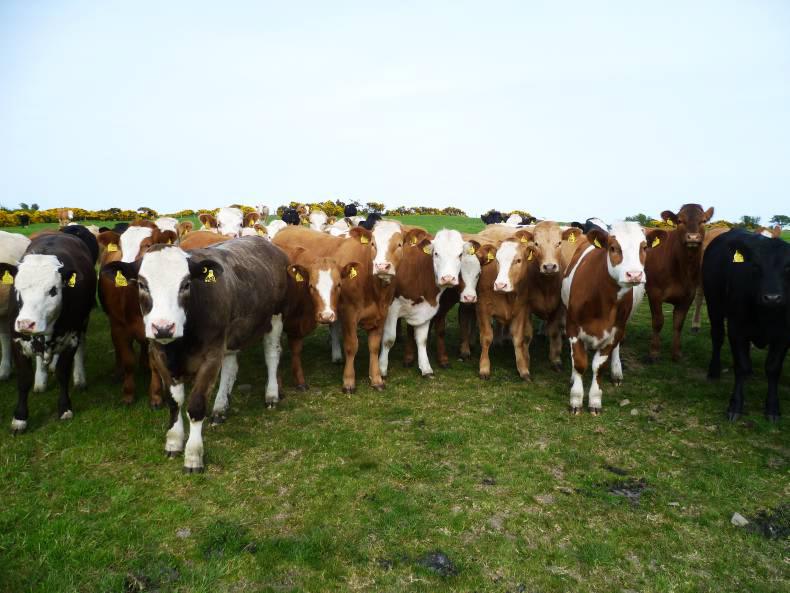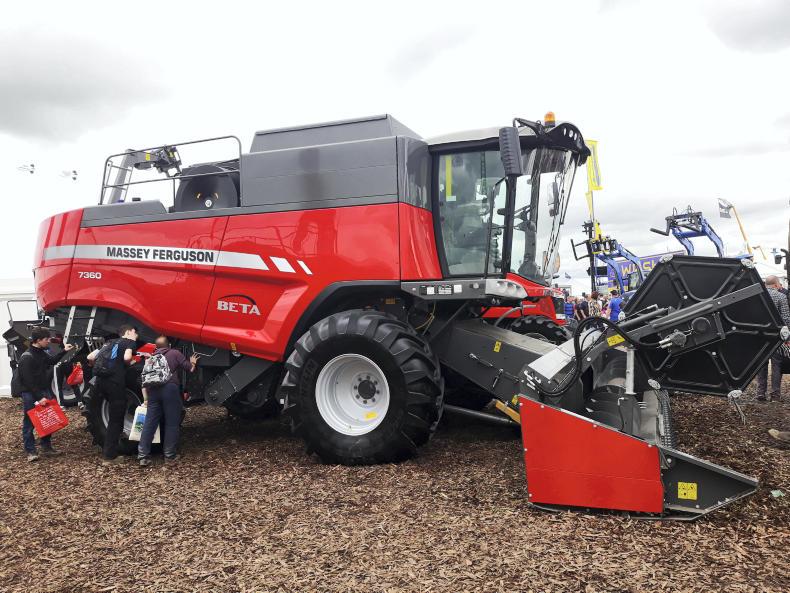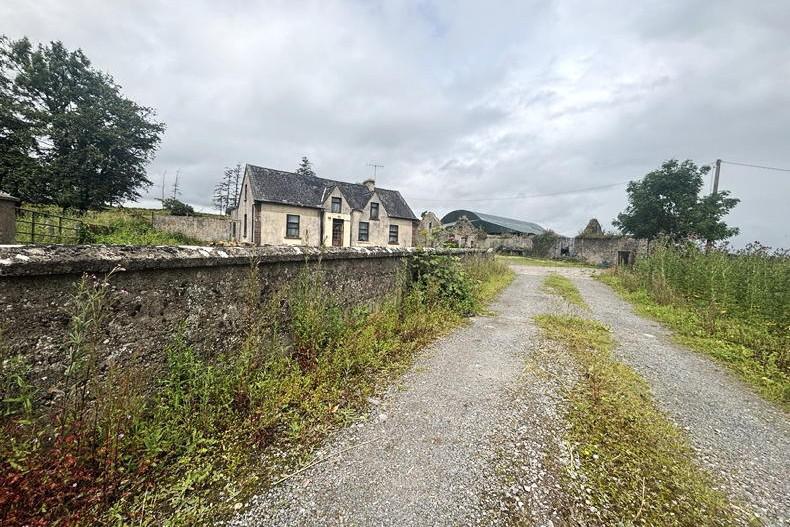Building a milking parlour is one of the major costs a new dairy business must incur.
The number of different options available can make choosing what parlour to build very difficult.
The final choice will depend on a number of factors: money available, intended future scale and personal preference.
Some aiming for large cow numbers that have borrowing capacity can justify building a bigger parlour. Many smaller scale new entrants will aim to start as cheaply as possible to minimise money spent before the business gets up and going but will leave room to scale up in the future.
During my visits I was very impressed with both the enthusiasm these new entrants had for dairying and the firm control they kept on start-up costs during their conversion.
Cheap and cheerful
The first new entrant I visited set up a six-unit milking parlour and 6,000-litre bulk tank for a total cost of €20,800. 2013 is his first year as a new entrant and he is currently milking 47 cows. The six-unit milking machine, clusters and milk line were bought for a total of €300. It was sourced on a farm that exited dairying three years ago.
A local milking machine technician checked that the machine was still functional and dismantled and re-assembled it in the new entrant’s parlour. Fittings and labour charges came to €3,000. The new entrant bought the steel himself and employed a man to make up the parlour framework for a total cost of €3,000.
The parlour was placed in an old shed with an extension to the front. This minimised start-up costs but has compromised cow flow; cows must turn 180 degrees to enter the parlour at the back. However, the parlour can easily be extended forward in the future. The pit and stall work are set up with room for four more units but the milk line is only big enough for a six-unit parlour. The new entrant intends to apply for the Dairy Equipment Scheme grant and will change the milk line, receiver jar and vacuum pump and add in the four units. He estimates this will cost around €3,800 per unit, before grant. If doing it again, would he go with the grant and new parlour from day one? He said: “For me keeping costs down was crucial. It’s possible to go back and extend the parlour now as I have had 47 cows in milk for nearly six months and milk price has been good. Initially, I just couldn’t have afforded it and I am delighted with how the parlour has worked out.”
A 6,000-litre Charleville direct expansion bulk tank with auto washing was also bought secondhand and cost €10,000 including installation. This tank will cater for three-day collection of 70 cows.
How did he decide that the 6,000-litre tank would be big enough? At peak milk yield it’s 28 litres per cow by 70 cows by three days equal to 5,880 litres.
This new entrant described recycling the water from the plate cooler into a reserve tank for wash-down after milking as one of his best moves.
Originally, he couldn’t believe the amount of water required during the milking process and having good water supply and storage were two key factors for him.
The parlour only has single phase ESB connection which may need to be upgraded in the future depending on scale.
Electrician charges were €1,500 and another €3,000 was spent on plumbing fittings (Table 1).
Secondhand success
The second new entrant I visited is milking 60 cows with plans to milk 100 cows in the future. He was very lucky to source a four-year-old 16-unit Daiymaster parlour just when he had given up hope of finding something suitable.
He said: “We searched the country looking at secondhand parlours but couldn’t find what we wanted. Many were parlours originally bought secondhand themselves and were then joined together so we weren’t willing to purchase these. The milking parlour is the most important equipment on your farm so, while you want to minimise spending, you can’t risk quality either.”
He bought the milking machine, stall work and feeders for €28,000 (€1,750/unit) which was excellent value. A new opportunity had come up for its previous owner and the 16-unit parlour was no longer adequate.
There was a milking parlour on the new entrant’s farm before so the 16-unit parlour went into this building. A local milking machine technician dismantled and assembled the parlour for €4,000. If doing it again, this new entrant wouldn’t install the individual cow mangers as he feels it slows cow flow and it’s difficult to squeeze an extra cow into the row in spring to tighten up heifers; a breast rail and steel trough with zig zag rump rails would be his preferred choice now.
He has no problem managing the 16 units himself. The parlour has swing over arms so automatic cluster removers could easily be installed but this is not a priority expenditure at the moment. Other costs included €5,000 for wiring (Table 2). A five-tonne meal bin was purchased for €2,400.
Cows walk straight from the collecting yard into the parlour but must turn 90 degrees to exit. Preferably, cows could walk straight out of the parlour. They can be manually drafted as they exit the parlour with a spring loaded gate on a pulley system.
Included in the €28,000 for the parlour was a 4,000-litre bulk tank which was originally bought in 1979. This tank must be manually washed and both compressors had to be changed, which cost €2,160, net of grant. However, he feels the bulk tank was still a great purchase as for minimal cost he could put off spending significant money on a bulk tank for three years. He is planning to apply for a grant to replace this and is thinking of installing a 9,000-litre tank but hasn’t got any quotes yet.
Good value in new eight unit parlour with grant
The last new entrant I visited is set up on a 100% leased farm and went for a brand new milking machine and secondhand bulk tank.
He said: “Personally, I wouldn’t buy secondhand if you could afford it. By the time you have it taken down and put up again it will cost similar to a new parlour with the grant, and you get a guarantee with the new milking machine.”
This new entrant bought a new eight-unit Pearson milking machine with swing over arms which cost €17,000 including stall work of €2,900 (Table 3). The machine has a 2.5 inch milk line which will cater for up to 20 units should the new entrant wish to extend. The parlour framework is bolted to the ground in four corners of the pit so if or when the new entrant doesn’t renew the lease he can easily take the milk plant with him.
There are no feeders in this parlour just a short concrete wall on which meal is placed.
There were no building costs as the new parlour fitted perfectly into the space of an old parlour that was on the farm. A secondhand 5,500-litre Liscarroll bulk tank was purchased for €10,000 with auto washing.
In the future this new entrant intends to install feeders but may need to raise the roof. He estimates that, including augers, the feeders would cost €250 per feeder unit or €4,000 in total. At the moment there is no meal bin on the farm and no further expenditure is planned for this year.
Meal is bought in half-tonne bags and bucketed-fed to the cows.
When cows exit the parlour, they must turn around a corner and exit down a passage which runs parallel to the milking parlour. A crush runs down one side of this passage. The milker can watch the cows walking down the passage from the pit via a strategically placed mirror. This combined with a drafting gate on a rope pulley system which can also be operated from the pit allows for efficient drafting of cows.















SHARING OPTIONS